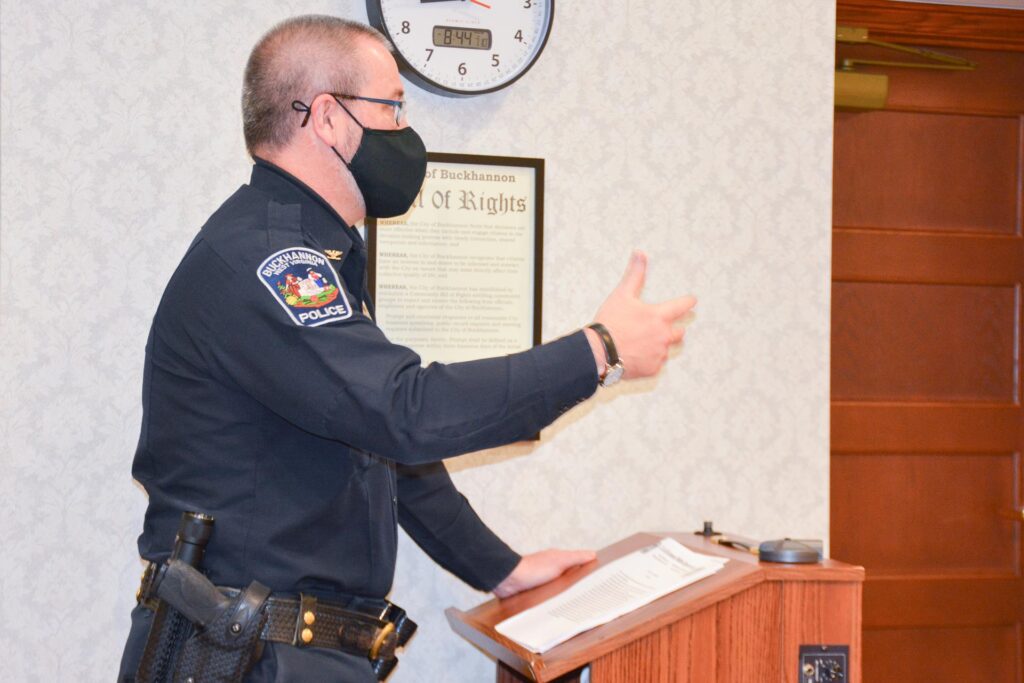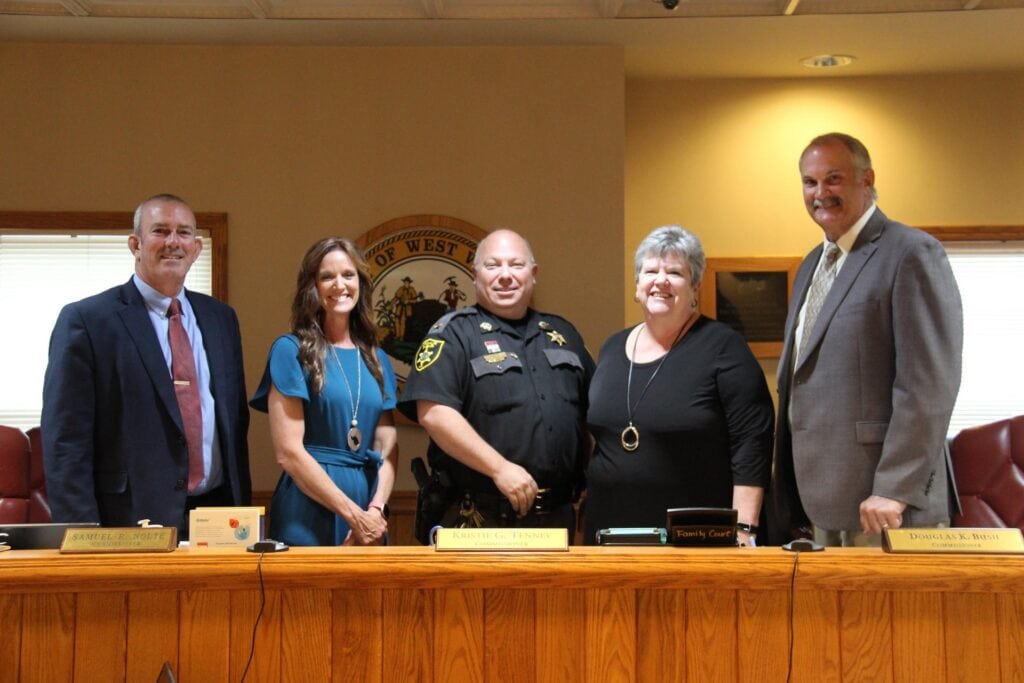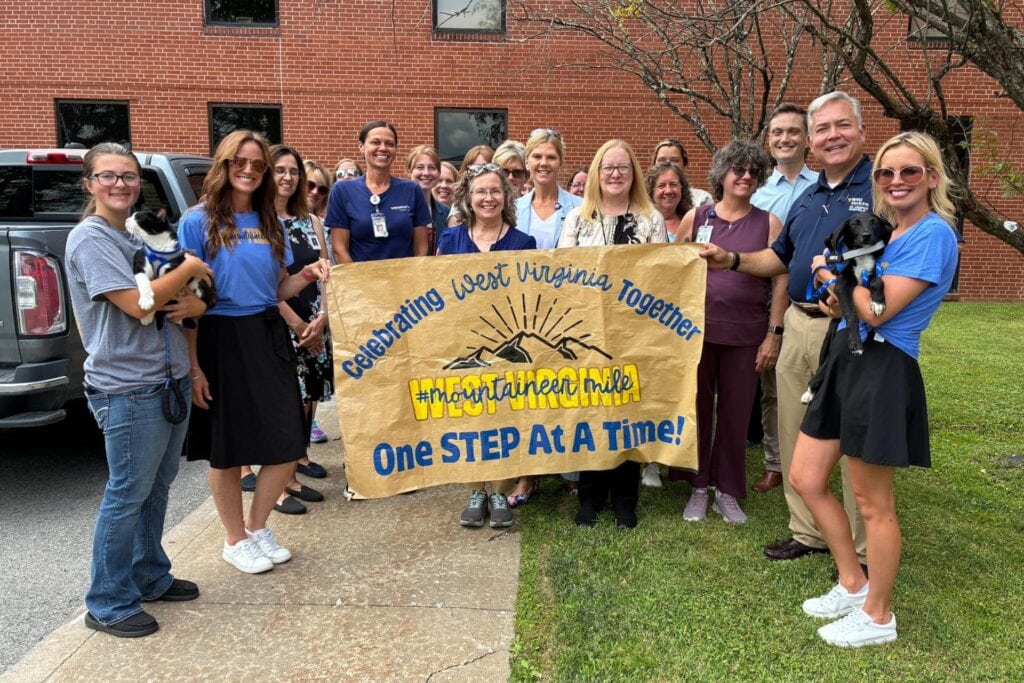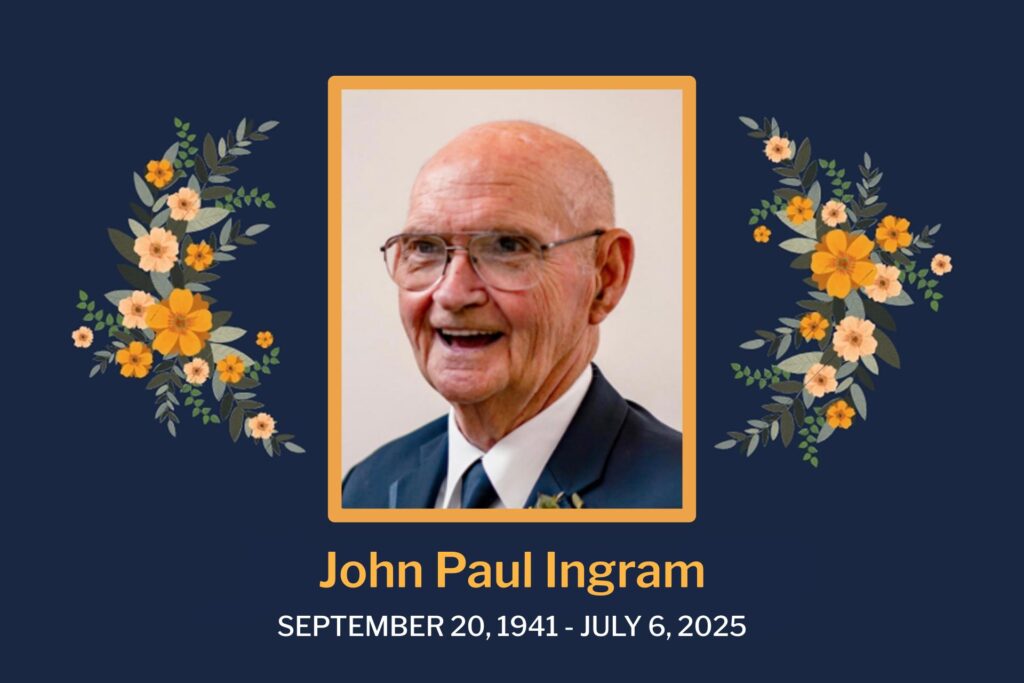BUCKHANNON – By July, the Buckhannon Police Department could be only the second nationally accredited law enforcement agency – aside from the Parkersburg Police Department – in West Virginia.
A key step toward that goal will come after Easter weekend, when a site-based assessment team from the Commission on Accreditation for Law Enforcement Agencies is slated to appear for an on-site assessment to evaluate “all aspects of the Buckhannon Police Department’s policy and procedures, management, operations, and support services,” according to a City of Buckhannon press release sent out last week.
The site-based assessment follows February’s web-based assessment and will take place over a two-day period, April 5-6, Buckhannon Police Chief Matt Gregory said. As part of the assessment, agency personnel and members of the community are invited to comment at a public information session at 7 p.m. Monday, April 5 in the Community and Training Room of the Public Safety Complex, located at 24 S. Florida St., Buckhannon.
“We are hosting it and helping to arrange it, but it’s being led by the assessors,” Gregory said. “Under normal circumstances, they would be here in person conducting the meeting, so to make it as close to that as we could, our solution was to have a physical meeting with the exception that the actual assessors will appear on the screen in the community room, so whoever wants to speak to them will be able to.”
So, what is the big deal, and what is CALEA?
CALEA considers itself to be the ‘Gold Standard in Public Safety’ and Virginia-based assessors will appear virtually to evaluate whether the Buckhannon Police Department meets the commission’s state-of-the-art standards. The end goal is accreditation, a prestigious recognition that the BPD subscribes to and consistently demonstrates professional excellence in public safety.
Gregory said the public information session will delve into the Buckhannon Police Department’s adherence to the 161 standards set forth by CALEA. Those standards – which the chief said are available for perusal at the police department – run the gamut.
“They cover everything from basic operations to administration to human resources,” Gregory said. “It really covers everything.”
The April 5-6 on-site assessment isn’t the final step to achieving accreditation for the first time, but it is, as Gregory said, “one major step toward it.”
“Really, 2021 has been defined by steps toward our accreditation,” he said. “Our first step this year was our web assessment, where two assessors logged into our files, and they looked at not only our policies and assessed the policies but looked at the proofs of compliance with those policies.”
Now, the BPD is about to undergo its on-site evaluation. The assessors will conduct a series of virtual or video interviews with representatives from agencies BPD officers routinely interact with. The police department will also take the assessors on video tours of the BPD’s headquarters at the Public Safety Complex.
Based on findings from the on-site assessment, evaluators will write a report, and Gregory will subsequently appear before a commission panel at CALEA’s conference in July, where he will be asked questions during the commission review and decision stage. It’s then that the Buckhannon Police Department will learn whether they have achieved accreditation. If they’re successful, they’ll be one of only two Mountain State law enforcement agencies to do so.
Gregory said it will be a relief to appear before the panel in July 2021 since the department first started the accreditation process via the initial self-assessment stage in 2018. And while nothing is certain regarding the upcoming on-site assessment, Gregory and his officers emerged from the web assessment with high marks.
“The feedback from the lead assessor was that our policy manual was very well put-together,” the police chief said. “He’s been doing this since 1999, and he estimated he’s evaluated 400-500 agencies, and he will often come across a policy that he recommends to the commission. His said he would recommend to the commission that our entire policy manual could be used.”
Although innumerable hours of work have gone into accreditation, the more Gregory delved into the commission’s mission and saw the positive effect it had on the department’s officers, the more value he saw in it.
“The more I have been involved in this, the more I appreciate it,” Gregory said. “It’s never over – you don’t cross that finish line for a final time. The very next day (after accreditation), you start on reaccreditation, so it’s continually adhering to policies and best professional practices – that’s really the benefit of the process.”
“It’s not about a certificate or a one-time distinction,” he added. “You’re always looking to improve, always looking to see that professional excellence.”
According to its website, CALEA was formed in 1979 as a credentialing authority through the collaborate efforts of law enforcement’s major executive associations, which included the International Association of Chiefs of Police, National Organization of Black Law Enforcement Executives, National Sheriffs’ Association and Police Executive Research Forum. The benefits of becoming accredited, it says, are an increased emphasis on community-oriented policy/increased community advocacy; reduced risk and liability exposure; stronger defense against civil lawsuit; and greater accountability within agencies.














